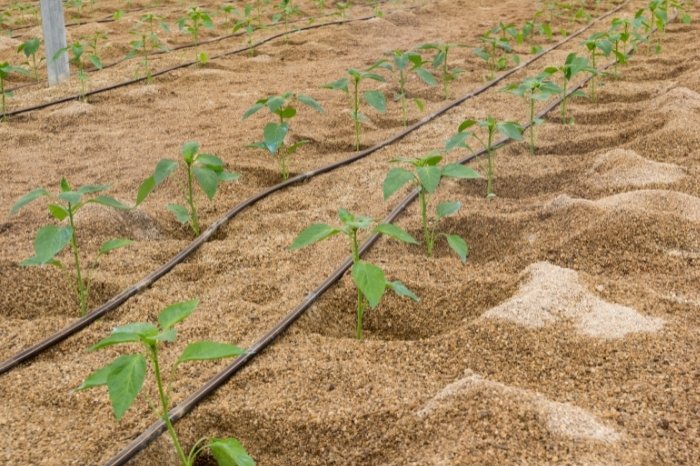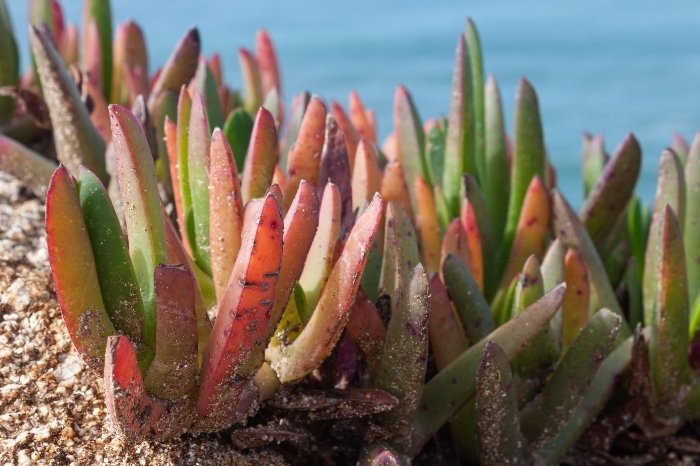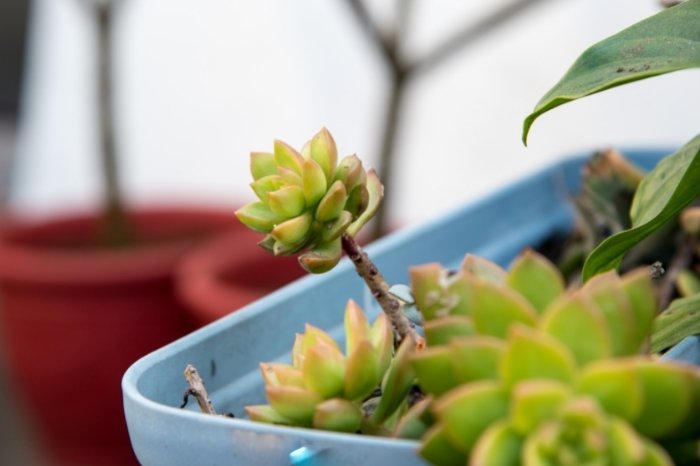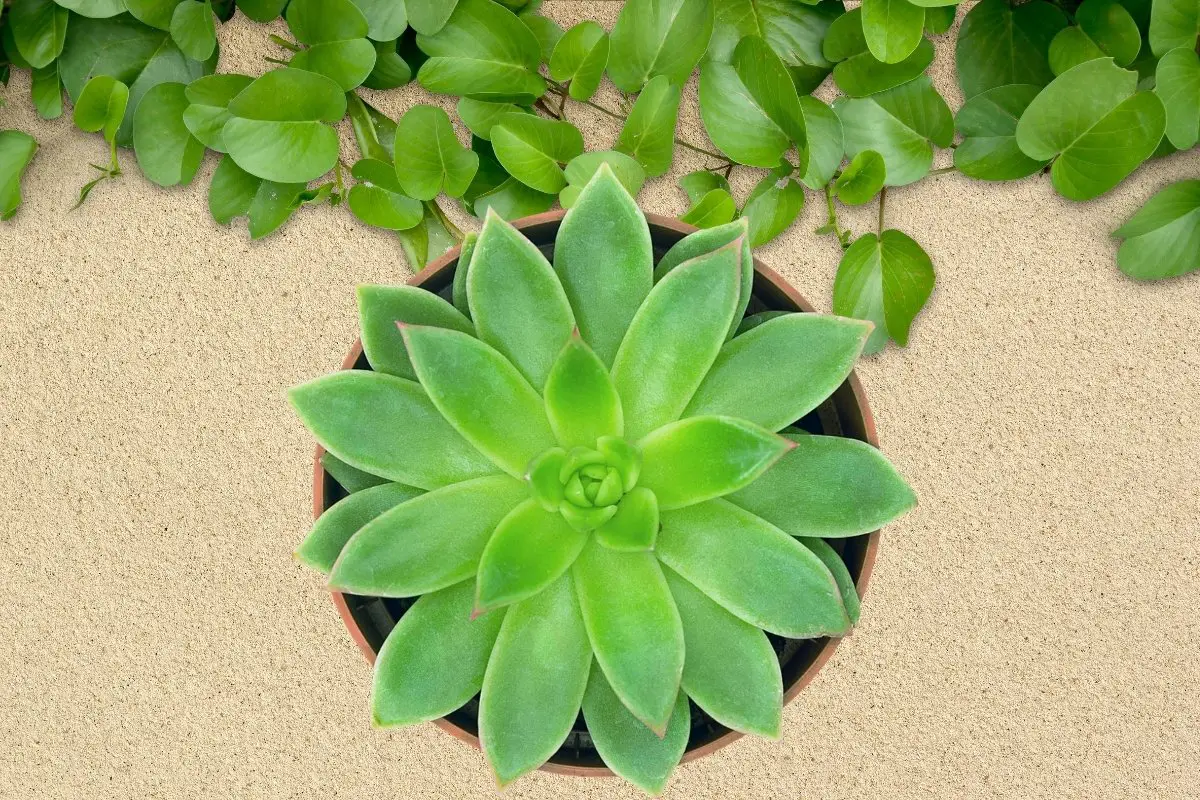Last Updated on December 27, 2022 by Griselda M.
Has someone recommended you add sand for plants to your potted flowers? Don’t be surprised; sand is part of some soil types and a perfect medium for tough soil. It can help elevate the porosity, bringing more moisture and air to the plant’s roots.
But not all sand works. And not every plant needs sandy soil. As a rule of thumb, and is perfect for succulents and drought-tolerant plants. Read along as we answer where to buy sand for plants and how to add it to the soil.
What Is Horticultural Sand
Sand is an essential part of the construction industry. But it’s also used in creating glass and in many recreational endeavors. Horticultural sand is part of the last example. Unlike the other types, horticultural sand is a mix of differently-sized particles.
For example, constructors need fine sand for mixing cement. But gardeners need grittier sand to create more porosity in a clay soil type.
Horticultural sand is ideal for increasing the drainage and penetrability of the soil. This sand can turn your heavy soil into perfection, whether it comes to your garden or potted plants.

Why Your Plants Need Sand
Well-draining soil is a must when potting almost all ornamental plants. Moreover, it’s easy to work and dig and works well with compost. A ground that is packed and heavy retains moisture. While some plants can benefit from excess humidity, most plants suffer from root rot.
Porous soil makes room for excess water to drain, eliminating the chances of root disease. Using sand for plants contributes to more soil pores. These pores allow more air to reach the roots.
When the soil is too heavy and there’s no way for enough air to get to the roots, the plant starts to die. It can result in yellow and wilted leaves.
Picking The Best Horticultural Sand
You might think that you can use any sand you have on hand. But it can give you the averse effect. The right type of sand makes the soil aerated and prevents clumping. Coarse sand helps dense soil become the perfect planting ground.
Using fine sand for plants additionally contributes to clumping and congealing the soil. It won’t let water drain and won’t open more pores in the ground. This is the play sand you may have laying around for your kids to play with.
Don’t forget that sand that’s not intended for horticultural use or has been lying around might be contaminated. There can be pests, microorganisms, heavy metals, or even a disease that can kill your plant.
Spare yourself the trouble or learn how to sterilize sand for plants. The store-bought horticultural sand is safe as it’s already sterilized and packaged in airtight bags.
Read more about Houseplant Indoor Palm Plant Identification – 5 Best Tips To Identify This Plant
Using Regular Sand
If you want to save money, you can repurpose the coarse sand you have lying around. This works if you have a small amount of sand, don’t try it with a whole bag.
First, do a quick research on how to wash sand for plants. Then place the sand on baking sheets in a layer no more than 4 inches thick.
Cover the sheets with aluminum foil, heat the oven to 200°F, and bake the sand for 30 minutes. If you have a cooking thermometer, check the sand. The temperature should not exceed 200°F.
Take it out, let it cool, and it’s ready for use. Beware that this will result in an unpleasant smell in your kitchen!
Why Use Sand For Plants
Did you know that some plants can grow in sand perfectly well as in soil? Predominantly succulents and other air plants can survive with no soil, as they don’t thrive in moist environments. If you own a terrarium, you already know this.
But you may have wondered what kind of sand can I use in my terrarium for air plants. This sand is different than potting sand.
In terrariums, the sand is used mainly as decoration and to help with drainage. You need no more than 1 inch of sand, and it can be fine, coarse, and even colored.
Here are some other reasons why you need to use sand for plants.
1. Increase Drainage
Good drainage is essential in preventing root rot and decay. Along with a good watering schedule, well-draining soil is responsible for a healthy plant.

2. Improve Heavy Soil
A clay soil garden shouldn’t deprive you of pursuing gardening. Adding sand for plants along with compost will improve the soil and make it ideal for vegetables and flowers!
3. Rooting Medium
You can propagate cuttings in the sand! If you’ve never done it, here’s a quick guide. You can purchase propagating sand or regular horticultural sand. In a cup, pour 5 inches of sand and water it. Then place the cutting and wait for them to grow roots.
4. Handmade Potting Mix
Don’t spend money on a potting mix if you have good soil in your garden. Instead, mix some soil with sand and compost, and fill your pots. A layer of sand will improve drainage and keep your potted plants healthy.
5. Prevent Tip Over
Sand, especially coarse sand, can add weight to the pot preventing a top-heavy plant from tipping over. Perfect for indoor plants!

Is Polymeric Sand Safe For Plants?
Is polymeric sand safe for plants? If you have a garden area and are wondering whether to use polymeric sand, then you probably don’t have a clue about whether they are safe for your garden plants. To answer the question regarding its safety, yes you can make use of this sand as it is generally safe. However, seeing that the nature and texture of sand particles may differ, when using polymeric sand near a vegetable garden, ensure that you know what it contains.
If you are using polymeric sand as a soil amendment together with clay soils for your garden plants, then you will enhance the growing medium’s drainage capabilities substantially. In this case, equal ratios of clay and polymeric sand will work well.
Can Plants Grow in Black Sand?
I have always wondered about, can plants grow in black sand until I tried it out myself. I realized that black sand is quite useful, so yes, plants actually do grow in them. However, there are a few things that you should take note of.
Firstly, if you have a terrarium, then black sand would be an excellent option for your plants. This is because this type of sand fairs very well in terrariums, making it the perfect substrate for closed container environments. To get rid of air pockets when planting in black sand, a good soak of water is recommended. Also, keep in mind that although some plants thrive when planted in this type of growing medium, others may not.
What Plants Need Sand?
If you have ever wondered what plants need sand, then take heed of the following information. Plants that need sand to grow their best and reach their full potential include lavender, carrots, sedum, potatoes, radishes, cucumbers, lettuce, and red chokeberries amongst others. These are cool weather-loving plants that thrive in aerated soil with excellent drainage properties. Whether you are making use of normal garden soil or a ready-to-use potting mix, amending your growing medium with sand is advised when growing plants that thrive on air and an adequate supply of water.
Which Sand is Best For Aquarium Plants?
When it comes to which sand is best for aquarium plants, careful thought should be given to both your plants and water creatures. In my opinion and that of many aquarium keepers, black sand is best for fish tank plants. The reason that black sand is the preferred choice for aquariums is that it is suitable to aid in the growth and maintenance of live plants.
Additionally, if the sand is moderately packed, you wouldn’t have to bother about changing it frequently as black sand lasts a while longer. When packing the sand around your plant, ensure that you don’t severely compact it as you should consider that your aquarium plant roots need to be able to breathe and spread out.
What Kind Of Sand Do You Use For Carnivorous Plants?
Knowing what kind of sand do you use for carnivorous plants will afford you a thriving meat-eating garden. Seeing that most plants that fall under the carnivorous category have specific requirements when it comes to growing mediums. For instance, while wet soil is required to grow them in the summer months, during winter, a reduced supply of water is required to keep them healthy and happy.
Therefore, making use of sharp sand is best to grow these plants in your garden. To enhance nutrient content and drainage properties, one part of sharp sand should be amended with three parts peat or sphagnum moss for favorable results.
Is Red Sand Good For Plants?
The answer to, this is red sand good for plants, is a big YES! This is because this soil type usually offers exceptional growth results when used to grow garden plants. If you’re wondering why the soil is red, it is because its coloring is because of the rocks containing iron oxide.
Another benefit of using red soil t grow your plants is that it is extremely rich in nutrients and has a high content of organic matter which is beneficial. One of the most important properties in agriculture is well-draining soil to protect the plant’s roots. Therefore red sand is good for plants as aside from its richness, it has excellent drainage capabilities.
Bottom Line: Why Use Sand For Plants
The small particles of the sand break up the clumps of even the heaviest soil like clay. This allows water to drain better, air to reach the roots, and compost to blend in better.
You might not need sand for plants if you have well-draining and rich soil. But if you’re dealing with heavy soil or preparing for potting plants, sand is a must.
Do you add sand to your potted plants? Share with us what kind of sand you use!
FAQ’s
Where to buy sand for plants?
You can get sand for plants at most online retailers like Amazon, or your nearest garden center.
How to sterilize sand for plants?
To sterilize the sand, wash it first and then spread it in a thin layer on a baking tray. Cover it with foil and bake it for 30 minutes on 180°F to 200°F. Let it cool before use.
How to wash sand for plants?
Pour your sand in a bucket and fill it up with water. Move your hand through the sand to loosen up any dirt. Carefully drain the water and repeat as needed. You can also use boiling water and a wooden spoon.
What kind of sand can I use in my terrarium for air plants?
Fine sand, white sand, and even quartz are perfect for terrariums. They're decorative and provide good drainage.
Mary is a passionate gardener who loves spending her days getting her hands dirty and nurturing her plants. She‘s an avid reader of gardening magazines and is always looking for new ways to make her garden thrive. When not outside tending to her plants, Mary can be found inside reading up on the latest gardening trends, comparing notes with fellow gardeners, and finding the perfect pottery planter for her next planting project.



